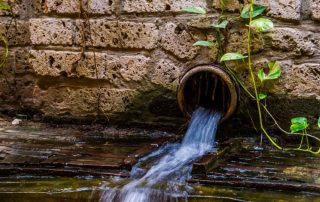The Ultimate Guide to Commercial Landscape Water Drainage
Pugh's Earthworks When it comes to maintaining the aesthetics and functionality of commercial properties, effective landscape drainage plays a crucial role. Without proper water management, landscapes can suffer from a range of problems that can lead to costly repairs and diminished curb appeal. In this comprehensive guide, we will explore the importance of Commercial Landscape Water Drainage, common issues caused by improper drainage, and best practices for designing and installing commercial landscape drainage systems. Why Landscape Drainage Matters The Importance of Proper Water Management In commercial settings, a well-maintained landscape is more than just a visual asset; it is a vital component of the property's infrastructure. Proper water management ensures that excess water is efficiently directed away from buildings, walkways, and green spaces. This prevents waterlogging, soil erosion, and structural damage, ultimately protecting your investment. Common Landscape Drainage Problems Improper landscape drainage can lead to various issues, including: Waterlogged Lawns and Gardens: Excess water can drown plant roots, leading to unhealthy, yellowing vegetation. Erosion: Runoff can carry away topsoil, leaving bare patches and undermining hardscaping elements. Structural Damage: Prolonged exposure to water can weaken building foundations and cause cracks in pavements. Flooding: Poor drainage can result in standing water, creating breeding grounds for mosquitoes and other pests. Designing an Effective Commercial Landscape Drainage System Assessing Your Property's Drainage Needs Before designing a drainage system, it is essential to conduct a thorough assessment of the property. Identify low-lying areas, slopes, and existing drainage patterns. Consider how rainfall and irrigation contribute to water flow and accumulation. The Pugh's Earthworks team is training to complete a thorough analysis! Key Components of a Landscape Drainage System Grading and Sloping: Ensure the land is properly graded to direct water away from structures and towards designated drainage areas. French Drains: These are trenches filled with gravel and perforated pipes that redirect water away from problem areas. Catch Basins and Inlets: Installed at low points, these collect and funnel water into underground drainage systems. Channel Drains: Ideal for hardscaped areas, channel drains are linear drains that capture surface water and direct it to a drainage outlet. Retention and Detention Ponds: These ponds temporarily hold excess water, allowing it to slowly infiltrate the soil or be released into storm drains. Choosing the Right Materials Selecting durable, high-quality materials is crucial for the longevity and effectiveness of your drainage system. Use corrosion-resistant pipes, geotextiles to prevent soil clogging, and heavy-duty grates for catch basins and channel drains. Installation Best Practices for Commercial Landscape Drainage Hiring Qualified Professionals For complex drainage projects, it is advisable to hire experienced professionals like Pugh's Earthworks who specialize in commercial landscape drainage installation. They can ensure the system is designed and installed correctly, adhering to local regulations and industry standards. Regular Maintenance Even the best-designed drainage systems require regular maintenance to function optimally. Schedule routine inspections to check for blockages, damage, and sediment buildup. Clean out catch basins and inlets and ensure that all components are in good working condition. Benefits of Effective Commercial [...]

